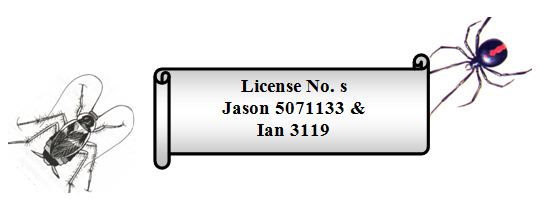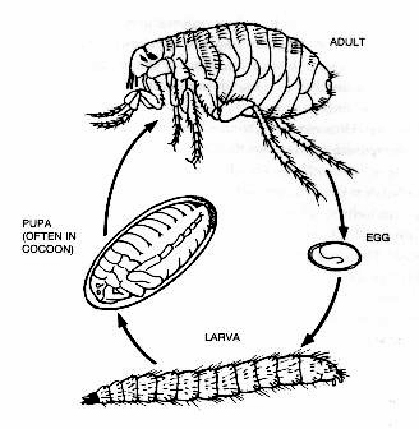Information
sheet on Fleas.
ABN 47 091 891 253

Office Phone: (02) 9631 3585
Jason’s Mobile: 0414 434 958
email: adaptablepc@ozemail.com.au
ABN 47 091 891 253

Office Phone: (02) 9631 3585
Jason’s Mobile: 0414 434 958
email: adaptablepc@ozemail.com.au
Fleas feature well up on most peoples list of abhorrent & repulsive insects, being much despised as a domestic nuisance & carrier of diseases. Their bites cause many hosts severe irritation. They are known to be effective transmitters and carriers of a number of diseases such as the rat borne bubonic plague Yersinia pestis, murine typhus Rickettsia typhi, as well as a number of varieties of tapeworm infections (Dipylidium caninum in dogs, and Hymenolepsis diminuta rodent tape worms – both found in humans as well).
They are external parasites, mainly of mammals and birds. While some species have only one type of host, others can survive on a variety of carriers. Fleas are irritating, annoying & when climatic conditions are favorable can exist in huge populations.
Fleas belong to the Order Siphonaptera - A widely known group of insects of which 88 species are known in Australia.
While from an insect perspective few other species can claim such a refined adaptation to its ecoparasitic lifestyle.

Fleas prefer warmer humid conditions and hence summer is a particularly busy period. As we have seen above the whole flea cycle can occur in a minimum of 18 days if conditions are ideal. However, they can slow to almost no growth if conditions become detrimental. While in both the egg and cocoon stages the wax like coating makes them hard to penetrate with chemicals.
At ADAPTABLE Pest Control for treatment of fleas it is important to utilize a range of treatment options in an integrated approach to control. There are non-chemical approaches using physical and cultural methods that need to be used as well as chemical alternatives.
Cultural control involves altering conditions to make the environment less attractive to the fleas both larvae and adults. Much of which involves recommendations to customers for things that they must do to ensure successful removal by the pest controller.
They include the following things;
With chemical treatments again there are a number of control options. They will be governed by things like the species, the size of the population, the distribution of the problem, the type of construction of buildings as well as many other factors.
The chemicals used can include organophosphates, synthetic pyrethroids, pyrethrins, dusts, as well as insect growth retardant’s. These can be as surface sprays, space sprays, and dusts.
We generally use surface sprays with and added insect growth retardant. Not only does this kill the live adults but has residual effect providing ongoing protection around skirtings and areas that provide harborages. This is complemented by use of chemical dusts applied to areas where wet sprays are problematic, including appliance motors and switchboxes where liquid will cause shorting or fires, as well as areas like roof voids and subfloors that could be hard to access all sections of. We also use insect growth retardant's that render insects incapable of mating or reproducing braking breeding cycles and also enhance longer-term effects.
We remind you that while in both the egg and cocoon stages the wax like coating makes them hard to penetrate with chemicals, and this means that fleas will continue to hatch from cocoons for a few days & in 14 to 20 days a new outbreak will occur as pupated cocoons become active. The residual effect plus the insect retardant will then need to kill these before the infestation subsides.
As well the chemical on the surfaces will also discourage fleas from sitting on them and makes them appear more active as they try to use any host to leave the treated vicinity.
As fleas are sometimes a persistent problem we will work to rid you of any single infestation as part of our commitment to professional service.
Your understanding is required where if after two months or more another infestation occurs that this is a new episode and not related to the cost of the first treatment.
Fill Out The Form Below to get a coupon good for Free Consultation by one of our highly trained Pest Control Techs, or give us a call today at 0414 434 958…